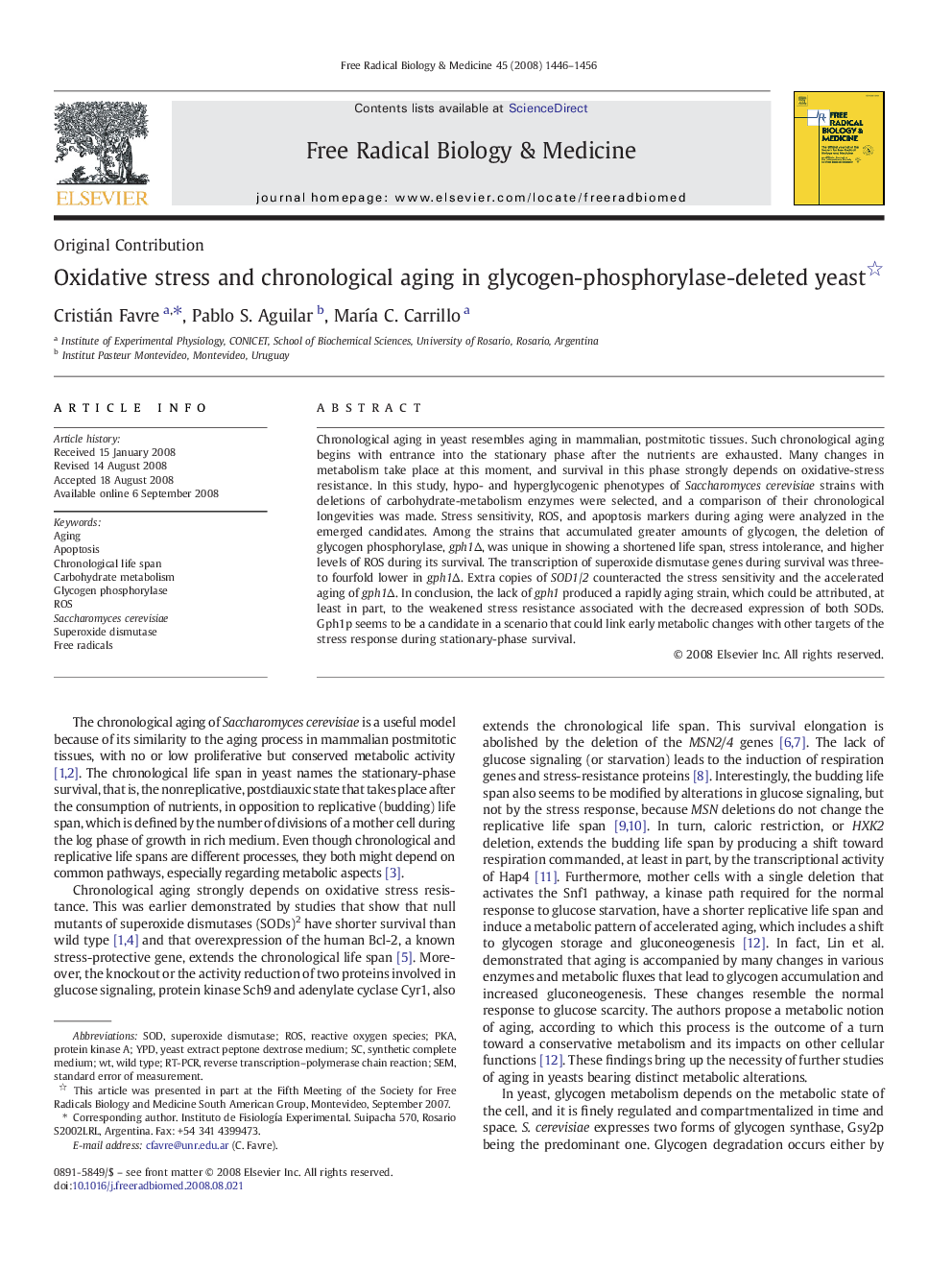| Article ID | Journal | Published Year | Pages | File Type |
|---|---|---|---|---|
| 1910492 | Free Radical Biology and Medicine | 2008 | 11 Pages |
Abstract
Chronological aging in yeast resembles aging in mammalian, postmitotic tissues. Such chronological aging begins with entrance into the stationary phase after the nutrients are exhausted. Many changes in metabolism take place at this moment, and survival in this phase strongly depends on oxidative-stress resistance. In this study, hypo- and hyperglycogenic phenotypes of Saccharomyces cerevisiae strains with deletions of carbohydrate-metabolism enzymes were selected, and a comparison of their chronological longevities was made. Stress sensitivity, ROS, and apoptosis markers during aging were analyzed in the emerged candidates. Among the strains that accumulated greater amounts of glycogen, the deletion of glycogen phosphorylase, gph1Î, was unique in showing a shortened life span, stress intolerance, and higher levels of ROS during its survival. The transcription of superoxide dismutase genes during survival was three- to fourfold lower in gph1Î. Extra copies of SOD1/2 counteracted the stress sensitivity and the accelerated aging of gph1Î. In conclusion, the lack of gph1 produced a rapidly aging strain, which could be attributed, at least in part, to the weakened stress resistance associated with the decreased expression of both SODs. Gph1p seems to be a candidate in a scenario that could link early metabolic changes with other targets of the stress response during stationary-phase survival.
Keywords
YPdpKaRT-PCRROSApoptosisStandard error of measurementFree radicalsAgingSaccharomyces cerevisiaeSODSuperoxide dismutaseChronological life spanYeast extract peptone dextrose mediumCarbohydrate metabolismSEMsynthetic complete mediumwild typereverse transcription–polymerase chain reactionprotein kinase AGlycogen phosphorylaseReactive oxygen species
Related Topics
Life Sciences
Biochemistry, Genetics and Molecular Biology
Ageing
Authors
Cristián Favre, Pablo S. Aguilar, MarÃa C. Carrillo,
